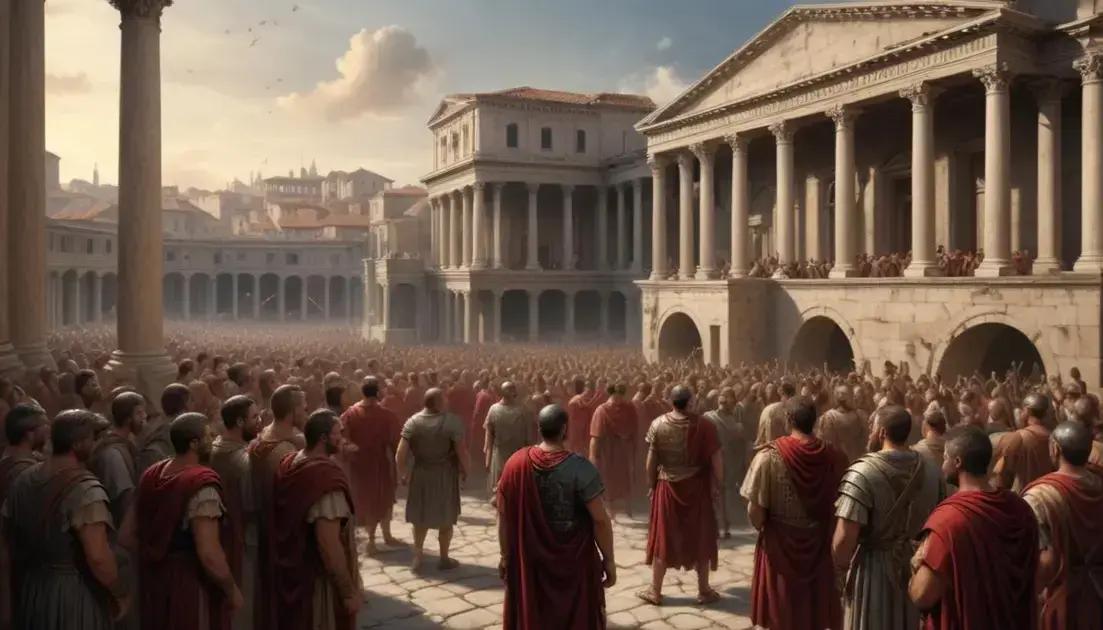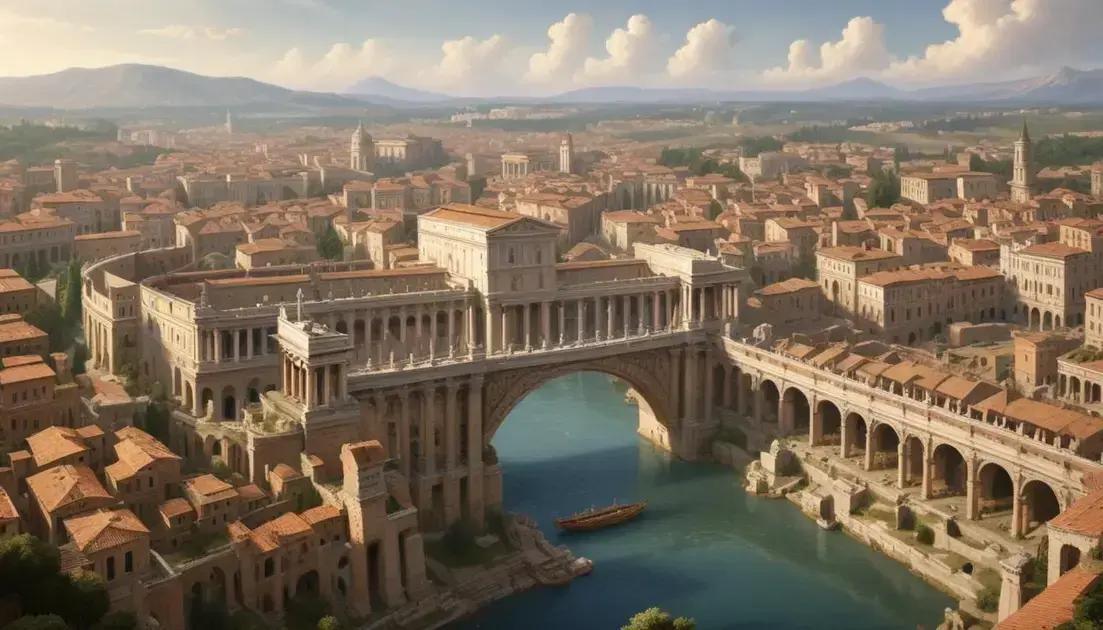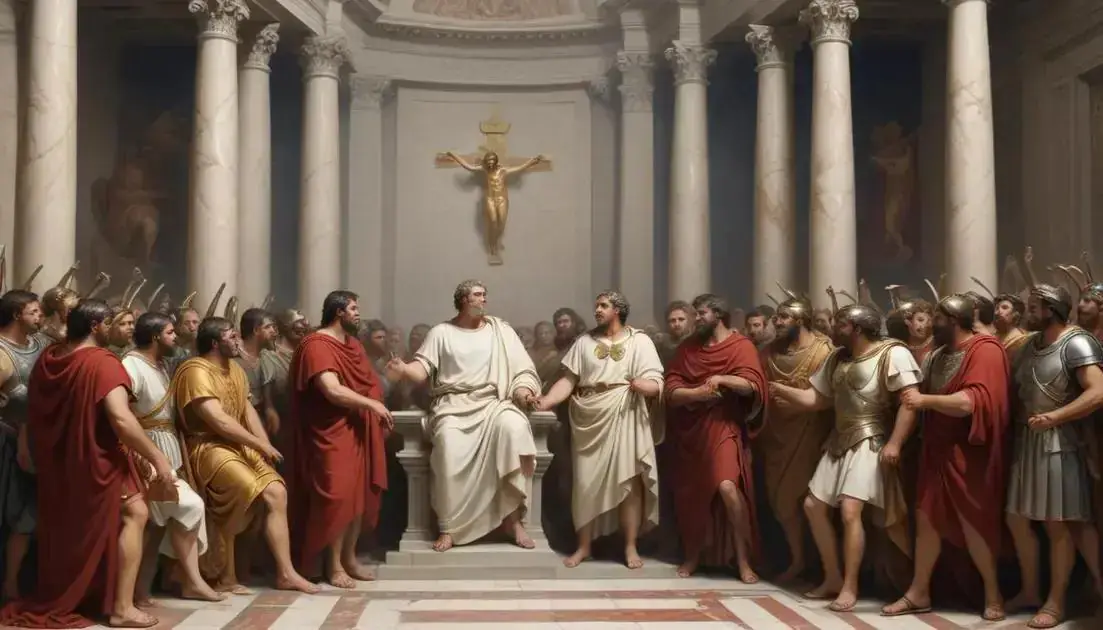
Diocletian and Systematic Persecution of Christians
Diocletian’s reign (284-305 AD) marked a significant era in Roman history, characterized by administrative reforms, military enhancements, and intense persecution of Christians. His establishment of the Tetrarchy aimed to improve governance, while severe measures against Christians led to lasting religious tensions. Despite the challenges, many Christians showed remarkable resilience and strengthened their faith, ultimately influencing the Empire’s future. Diocletian’s actions set the stage for the rise of Constantine, paving the way for Christianity’s acceptance in the Roman world.
Did you know that the Diocletian Persecution stands out in history as one of the most extensive efforts against Christians? Let’s explore this pivotal moment!
Historical context of Diocletian’s reign
Diocletian ruled as the Roman Emperor from 284 to 305 AD. His time was marked by significant changes and challenges. He took over during a period of crisis, when the Roman Empire faced economic troubles, invasions, and internal conflicts. Diocletian aimed to strengthen the Empire and restore order.
The Tetrarchy System
One key step was the creation of the Tetrarchy. This system divided the Empire into four regions, governed by two senior emperors and two junior co-emperors. It helped maintain control and manage the vast territories more effectively. This arrangement aimed to ensure stability during turbulent times.
Economic Reforms
Diocletian also introduced economic reforms. He tried to stabilize the economy by setting price controls on goods. This was crucial because inflation had made daily life challenging for many people. These price limits were meant to prevent excessive costs and ensure basic needs were met.
Military Strengthening
Another focus of his reign was strengthening the military. Diocletian expanded the army and improved defenses. This was vital to protect the Empire from outside threats, especially from Germanic tribes. He also recognized the importance of loyalty among soldiers.
The Role of Religion
During his rule, religion began to play a critical role in society. Christianity was growing rapidly and started to challenge traditional Roman beliefs. Diocletian saw this as a threat to the unity of the Empire. This led to the infamous persecutions that aimed to suppress Christianity.
Overall, Diocletian’s reign was a mix of innovation and conflict. His decisions shaped the Empire for years to come, setting the stage for future challenges and changes.
Overview of the persecution events
The persecution of Christians under Diocletian began around 303 AD. This marked one of the most severe crackdowns on Christianity in Roman history. The Emperor believed Christians were a threat to the stability of the Empire.
Initial Edicts
Diocletian issued a series of edicts. The first one ordered the destruction of Christian churches and scriptures. This was a direct attack on their beliefs and practices. It aimed to weaken the Christian community.
Widespread Arrests
Following the edicts, authorities arrested many Christians. Trials were held, and punishments ranged from fines to execution. Many refused to recant their faith, showing remarkable courage despite the risks.
Brutal Methods
The methods of persecution were ruthless. Some Christians faced torture, while others were thrown to wild animals. These public spectacles aimed to intimidate and discourage others from following Christianity.
Impact on Communities
These events left deep scars on Christian communities. Families were torn apart, and many lost their lives. Despite this, the faith continued to grow, driven by the resilience of believers.
The persecution finally began to wane with the rise of Constantine. His support for Christians marked a turning point, leading to greater acceptance in the Empire.
Impact on Christian communities
The impact of Diocletian’s persecution on Christian communities was profound and far-reaching. Many Christians faced severe challenges during this time. Lives were lost, and families were torn apart.
Loss and Suffering
Many Christians were executed for their faith. This loss created deep emotional scars among survivors. Families grieved for loved ones taken from them. The suffering was not just physical; it affected their spirit.
Community Resilience
Despite the harsh measures, Christian communities showed remarkable resilience. They banded together to support one another. Shared faith helped them endure the trials they faced. Many Christians continued to practice their faith, even in secret.
Strengthened Beliefs
For many, the persecution only strengthened their beliefs. Witnesses of their faith inspired others to join the movement. Stories of courage spread, encouraging more to embrace Christianity.
Formation of New Structures
During this period, new church structures began to form. Leaders emerged to guide and protect their communities. These leaders played a vital role in fostering unity and support.
Legacy of Faith
Ultimately, the persecution left a legacy. It shaped the identity of Christian communities. The trials they endured became a part of their history, inspiring future generations.
The legacy of Diocletian’s actions
The legacy of Diocletian’s actions continues to influence history and society today. His reign made a significant impact on the Roman Empire and its future.
Administrative Changes
Diocletian’s introduction of the Tetrarchy changed how the Empire was governed. This division aimed for more efficient control. It influenced future rulers on how to manage large territories.
Religious Tensions
His persecution of Christians created lasting religious tensions. This action led to increased divisions between Christians and pagans. This conflict continued for centuries in the Empire.
Military Reforms
Diocletian also strengthened the military. His focus on defense helped protect the Empire from external threats. This set a standard for future military strategies.
Legacy of Persecution
The severe treatment of Christians became a dark chapter in history. It eventually fueled the growth of the Christian faith. The courage shown by many martyrs inspired future generations.
Transition to Constantine
His reign set the stage for the rise of Constantine. Constantine’s support of Christianity marked a turning point for the faith. Diocletian’s actions directly influenced this transformation.
Overall, Diocletian’s legacy is complex. It encompasses administrative reforms, religious conflict, and military strategies that shaped the Empire’s path.
Conclusion
In conclusion, Diocletian’s reign significantly shaped the Roman Empire and its future. His administrative reforms not only improved governance but also affected how future leaders managed their territories. The intense persecution of Christians added a complex layer to the Empire’s history, leading to religious tensions that would last for centuries.
Moreover, the military enhancements he introduced helped protect the Empire against external threats. While his actions were often harsh, they also set the stage for the eventual rise of Constantine and the acceptance of Christianity. Ultimately, the legacy of Diocletian is a mix of strength, conflict, and transformation, illustrating the challenges and changes within one of history’s greatest empires.


